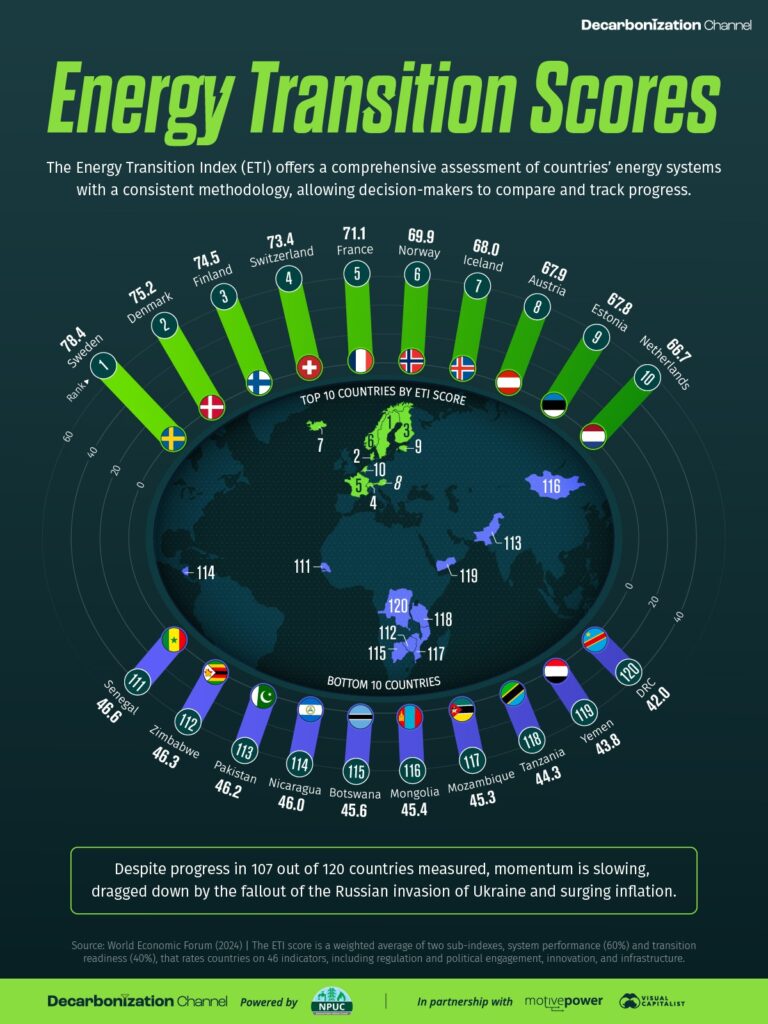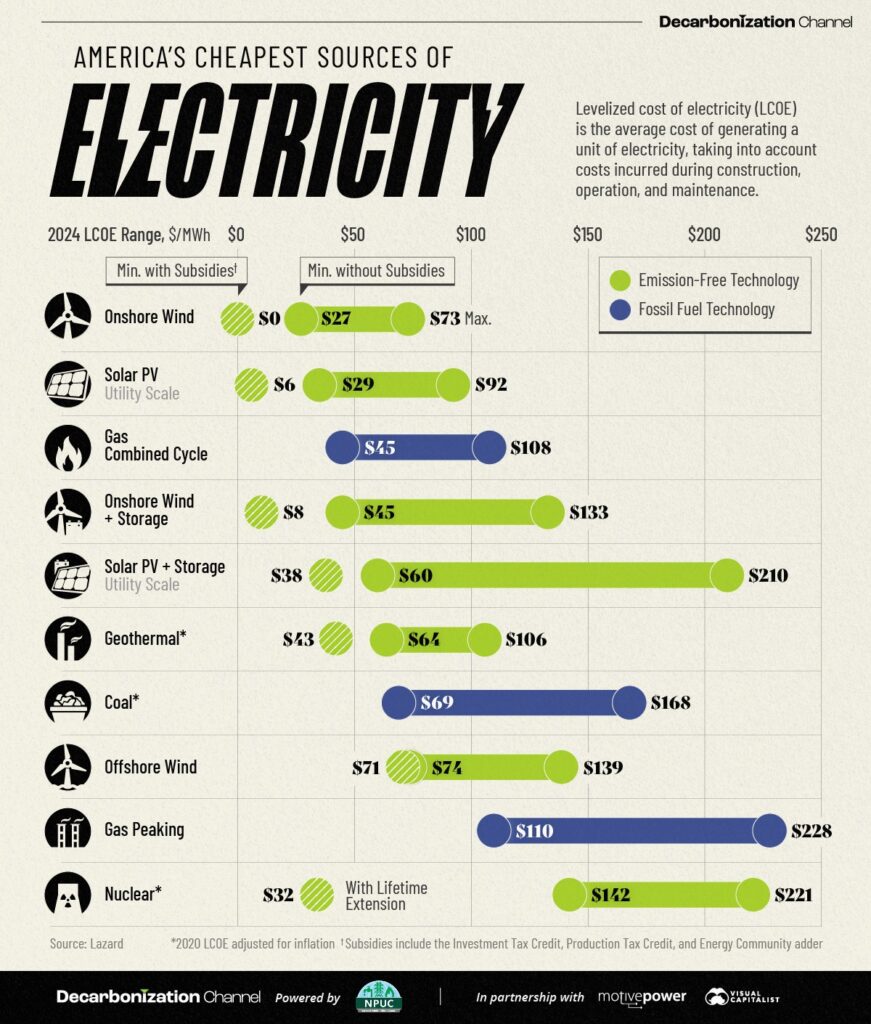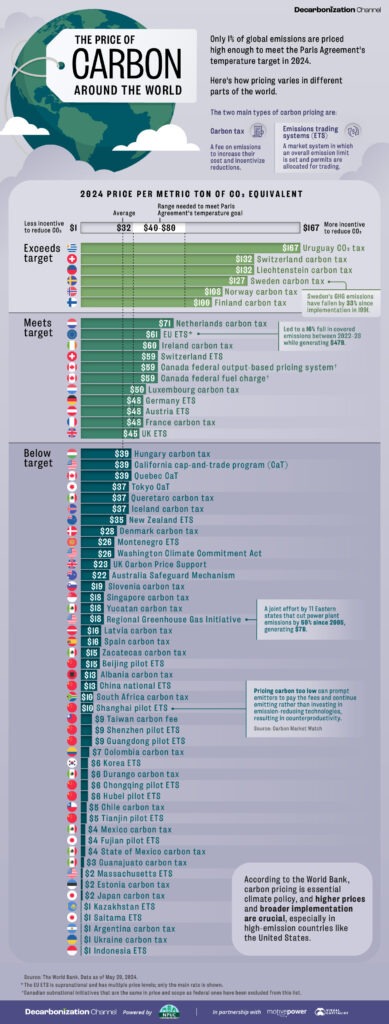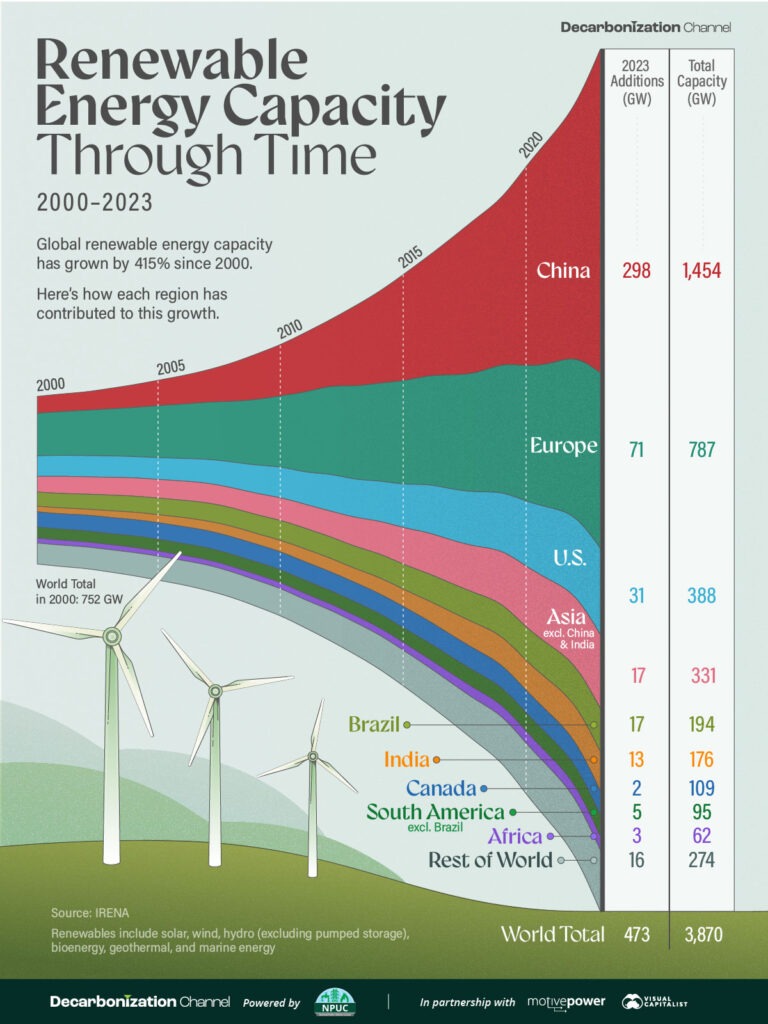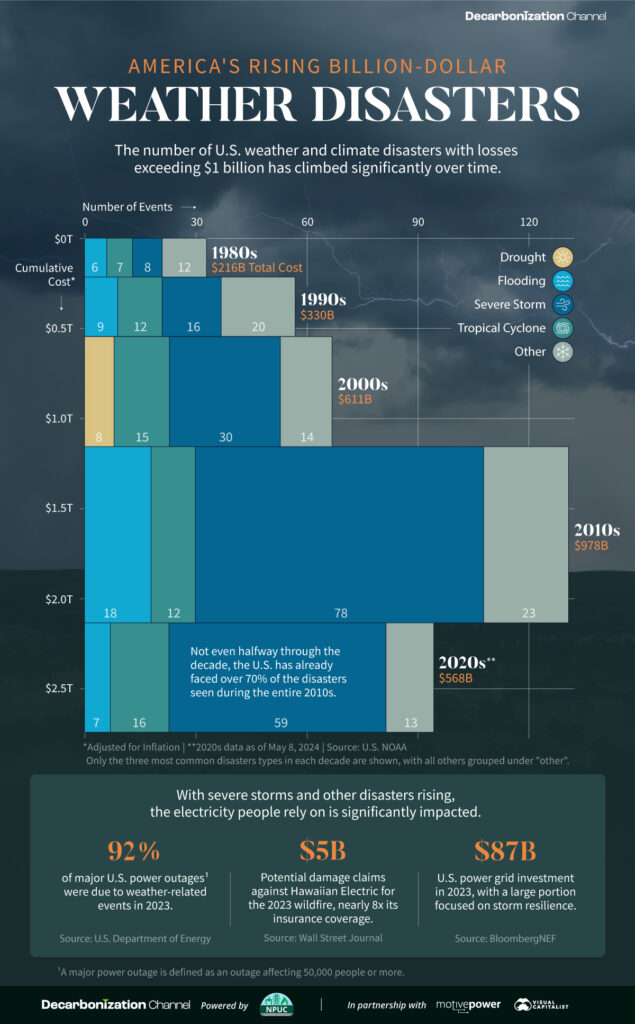Gain sustainability insights from the perspective and expertise acquired from working with some of the best clients in the world.
Ranked: Energy Transition Scores by Country in 2024
Ranked: Energy Transition Scores by Country in 2024Ranked: Energy Transition Scores by Country in 2024 The World Economic Forum (WEF) recently unveiled their 2024 Energy Transition Report, which assesses 120 countries around the world on their decarbonization...
Ranked: America’s Cheapest Sources of Electricity in 2024
Ranked: America’s Cheapest Sources of Electricity in 2024 In the evolving global energy landscape, renewable sources are becoming increasingly cost effective. Even without subsidies, renewables are often the cheapest option available. This chart, created in...
Visualized: Emission Reduction Targets by Country in 2024
Visualized: Emission Reduction Targets by Country in 2024Since 2021, another 40 countries have established climate goals for 2030. However, the path to net zero remains uneven. With average national warming already 1.81°C above pre-industrial levels, the...
Visualized: The Price of Carbon Around the World
Visualized: The Price of Carbon Around the World Only 1% of global emissions are priced high enough to meet the Paris Agreement’s temperature target in 2024. This chart, created in partnership with the National Public Utilities Council, shows carbon prices...
Visualized: Renewable Energy Capacity Through Time (2000–2023)
Visualized: Renewable Energy Capacity Through Time (2000–2023) Global renewable energy capacity has grown by 415% since 2000, or a compound annual growth rate (CAGR) of 7.4%. However, many large and wealthy regions, including the United States and Europe,...
The Rise in America’s Billion-Dollar Extreme Weather Disasters
The Rise in U.S. Billion-Dollar Extreme Weather Disasters Since 1980, there have been 383 extreme weather or climate disasters where the damages reached at least $1 billion. In total, these disasters have cost more than $2.7 trillion. Created in partnership...

